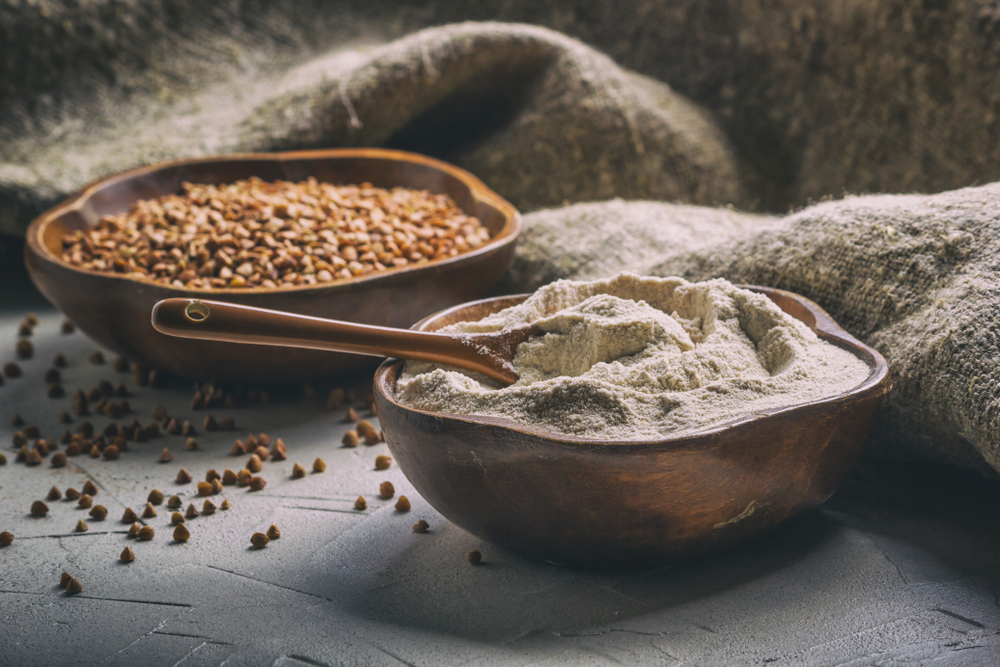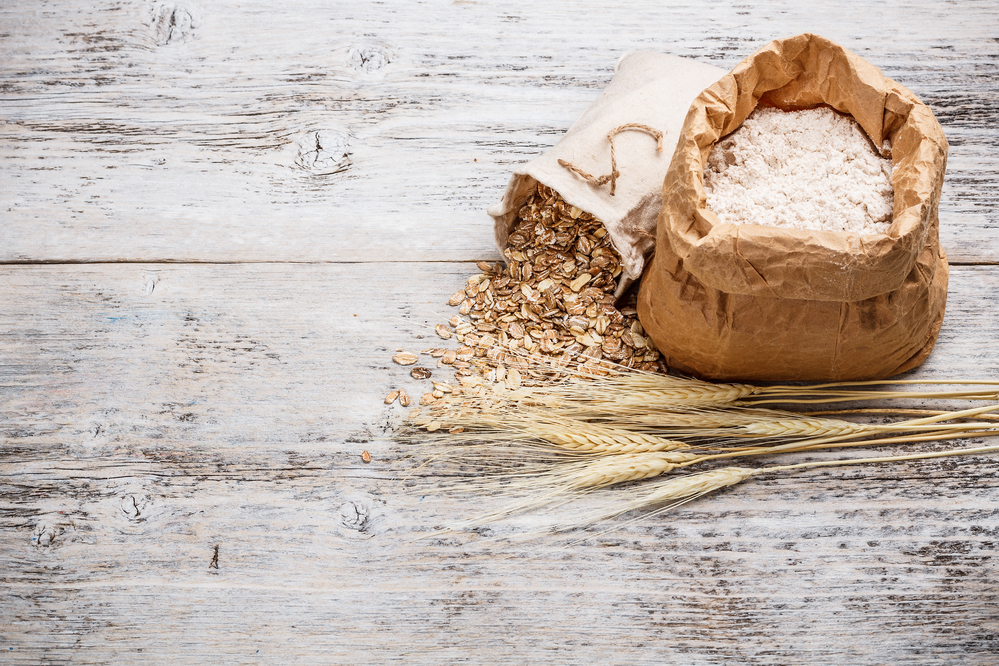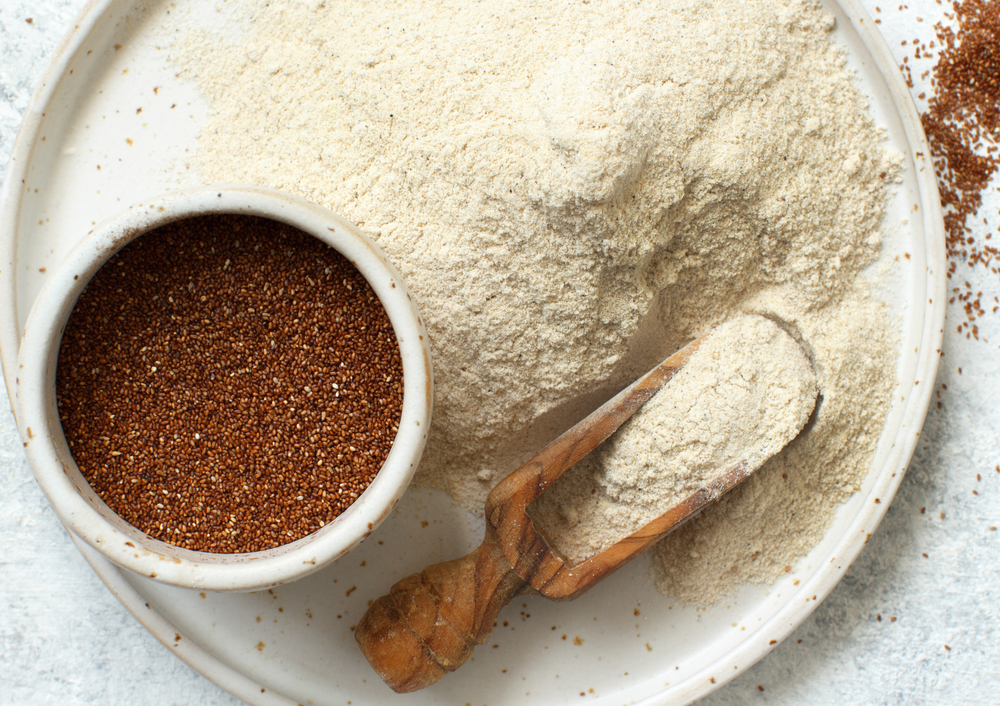Delicious, hearty, and served hot or cold, soba noodles are Japanese noodles made from buckwheat flour. These gluten-free noodles are thinner and shorter than linguini noodles and light brown in tone. The unique, traditional flavor of soba noodles has been described as nutty and earthy.
They’re a staple in Japanese cuisine, and can be paired with a vast array of soups and sauces. However, some grocery stores might not have soba noodles in stock, especially at smaller local shops in the US. Or, perhaps you’re just not a fan of the earthy, slightly grainy flavor.
There are a few viable substitutes for soba noodles. Udon noodles, somen noodles, and ramen noodles are acceptable alternatives in some recipes. Other replacements include whole wheat spaghetti, Korean buckwheat noodles, or whole wheat vermicelli. If you’re feeling adventurous, you could try making your own buckwheat noodles at home.
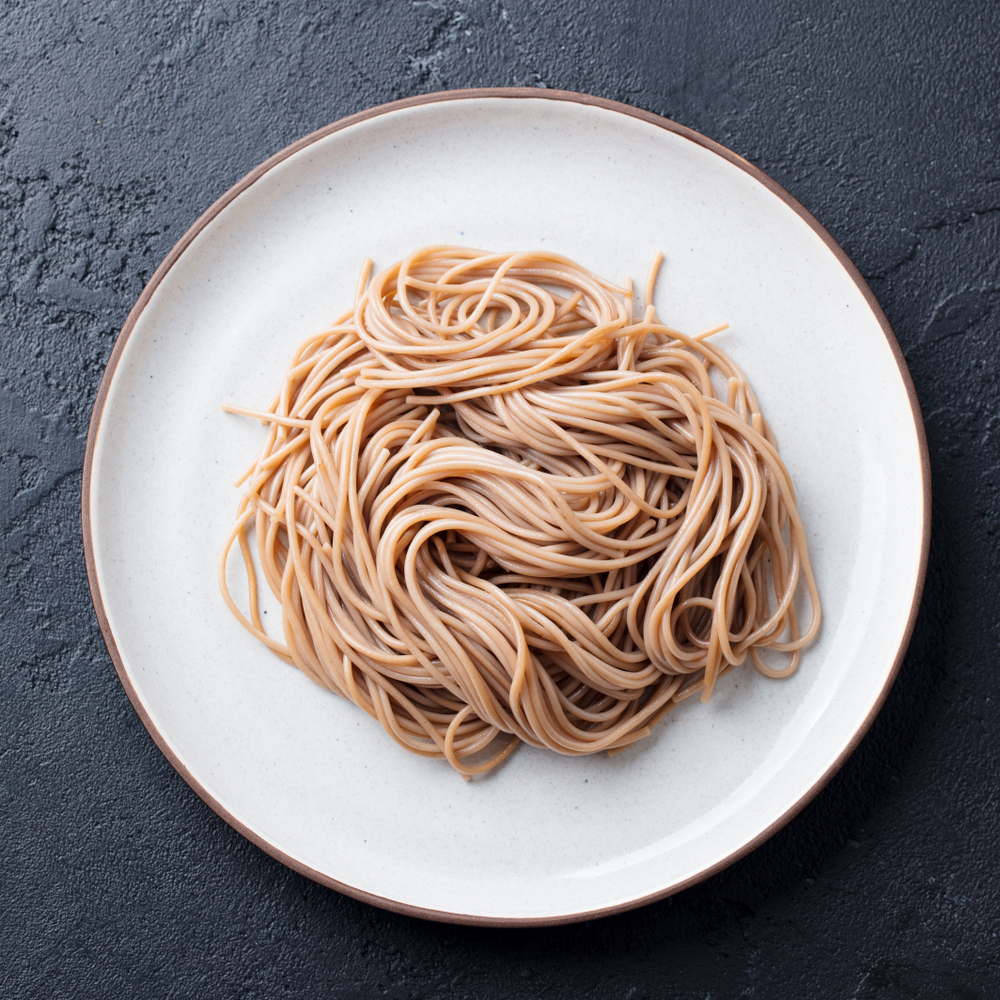
Substitutes For Soba Noodles
Finding alternatives to soba noodles is as easy as hunting around for a noodle with similar flavors and textures. You will also want to consider what might pair well with the broth or sauce you’re serving with it.
1. Somen Noodles
Somen noodles are thin, and can be served cold with a dipping sauce. This is similar to a popular method of enjoying soba noodles. On the warmer end of the spectrum, somen noodles served in a hot soup is a popular winter dish in Japan, just as one would find with soba or udon noodles.
They will not have the exact same earthy flavor, but the texture may be similar enough to make them a feasible substitute for soba noodles. If you’re looking for an earlier flavor in your overall hot dish, try roasting mushrooms into your broth as well.
2. Mak-Guksu (Korean Buckwheat Noodles)
The primary ingredient in soba, what gives it the signature brown color and nutty taste, is buckwheat. Korean buckwheat noodles, or mak-guksu, are a local specialty of the Gangwon province in South Korea, and are served hot and cold. They’re an excellent substitute for soba noodles because they will deliver a similar flavor profile.
The noodles may be a bit thicker than soba, and usually darker in color. However, the taste will be very similar, and it will pair well with any hot or cold application you’d use soba for. The texture may be a bit rougher than soba, however this isn’t a bad thing; the rougher texture holds onto sauces and toppings perfectly.

3. Whole Wheat Spaghetti
Whole wheat spaghetti is an easy, inexpensive replacement for soba noodles, though it does not have exactly the same taste. Whole wheat spaghetti will be earthier in taste than its bleached flour cousin, but not as much as soba. If you’re in a pinch, though, whole wheat spaghetti will serve much the same purpose as a soba noodle.
It’s not advised to use it in cold dishes though. When cooked spaghetti noodles dry out and cool down, they tend to become stiff and tacky. If you’re going to serve them cold, consider putting them on ice to lower the temperature while keeping it lubricated.
4. Whole Wheat Vermicelli
Deliciously thin and full of fiber, whole wheat vermicelli is a great substitute for soba noodles. You’ll get the grain-like taste of whole wheat, all of the nutritional content, and a similar thin shape.
Whole wheat vermicelli will be best in hot dishes, though it can be dipped into a sauce cold similarly to soba. It will carry the flavors of whatever you’re serving it with well, and can hang onto toppings easily.
5. Ramen Noodles
Ramen noodles often get a bad reputation of being cheap, unhealthy college-kid food. However, ramen is actually a versatile, delicious, and easy-to-find noodle that will work well as a soba substitute.
Curly and made of flour and kansui (or alkaline water), ramen noodles don’t have as much of a nutty bite as soba noodles. However, they’re thin enough that they can be used as an alternative if nothing else is available. They’re perfect in a broth, and can even be good cold.

6. Udon Noodles
While they’re much thicker, chewier, and paler than soba noodles, udon noodles can still work well in a lot of dishes. They’ll be excellent hot or cold, just like soba, and can lend an almost creaminess to a recipe.
You will miss the earthy flavor, but not entirely. Udon noodles are excellent at soaking up the flavor of the broth around them. Since their flavor is so mild, they wont overwhelm the other tastes in a warm application like soup or curry.
7. Yakisoba Noodles
Usually, ‘soba’ means ‘buckwheat’ when used in Japanese food nomenclature. However, yakisoba actually doesn’t have buckwheat in it; the ‘soba’ actually refers to Chinese noodles, or Chuuka soba. Chuuka soba is made from wheat flour instead of buckwheat.
Yakisoba noodles are typically fried, and have a savory, almost meaty taste to them. This isn’t on par with the flavor of soba, but it can still take its place in a lot of dishes. It pairs well with cabbage, pork, and peppery foods, making it great for use in place of soba.
8. Homemade Soba
If you’re feeling up to the task, you can make your own soba noodles at home. Soba noodles that you make yourself will taste a bit different than the ones you’d buy, but this isn’t a detriment. They’ll be perfectly savory, nutty, and fragrant.
Don’t worry if you don’t get your first batch of soba noodles just right. Chefs who make soba noodles professionally have had years of training to perfect the art. They might also use dedicated tools or machines that are unavailable to home chefs.
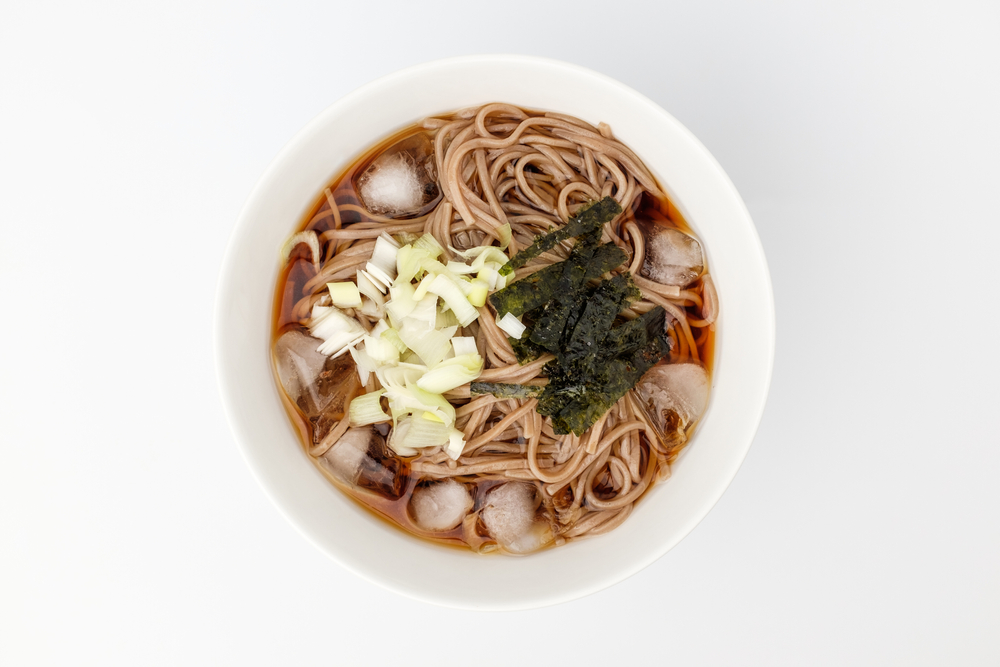
Buckwheat flour can be difficult to work with. That doesn’t mean it’s an impossible feat, however. Using buckwheat flour, all-purpose flour, and mineral water, you can quickly whip up a batch of your own soba noodles.
Do You Need A Pasta Machine To Make Your Own Soba Noodles?
You do not need a pasta machine to make your own soba noodles at home. All you’ll need is a mixing bowl, a flat, clean surface to work on, a rolling pin, and some elbow grease.
You’ll also need a measuring cup to add the flour; it’s advised that you weigh your ingredients too to maintain a perfect balance. A kitchen scale will help you mix your dough so that the buckwheat flour alone doesn’t make it crumbly or dry.
If you have a pasta roller, you can use it if you’d like. It could be helpful in making and cutting the sheets of soba dough into noodle shapes.
How To Make Homemade Soba Noodles
To make your own soba noodles as a replacement for store-bought soba, you will need:
- 2 heaping cups, or 280 grams, of stone-milled buckwheat flour.
- ½ heaping cup, or 70 grams, of all-purpose flour
- ¾ cup (175 grams) of filtered mineral water.
- You’ll also need to use potato flour or tapioca starch when you’re rolling out the soba.

Step One
First, sift both flours into your mixing bowl. As an extra precaution, you can even sift them twice to get the flour as fine as possible.
Step Two
Then, add your water and begin to knead it. You’ll want to knead the flour in until a crumbly dough is formed. If you’re finding the dough is too dry, or won’t combine together, add a tablespoon of water as needed. On the other hand, the dough should not be sticky or wet; add more all-purpose flour to thicken the mixture.
Step Three
Take the dough out of the bowl and begin to knead it on a clean countertop. The dough is done when it is smooth and homogenous, and doesn’t crack when worked. Your final dough will be very dense, and it’ll take some arm power to keep working it.
Step Four
Shape the dough into a sort of cone shape, almost like a mountain. Next, using the palm of your hand, press straight down on the tip of your mountain until it becomes a flat disc. The reasoning behind this method is that it will keep the disc even on all sides.
Step Five
Dust your countertop or workspace with your starch. Coat the top of the disc with starch as well, and add some to the rolling pin for good measure. Working from the center outward, taking long even strokes, roll your dough out until it is very thin.
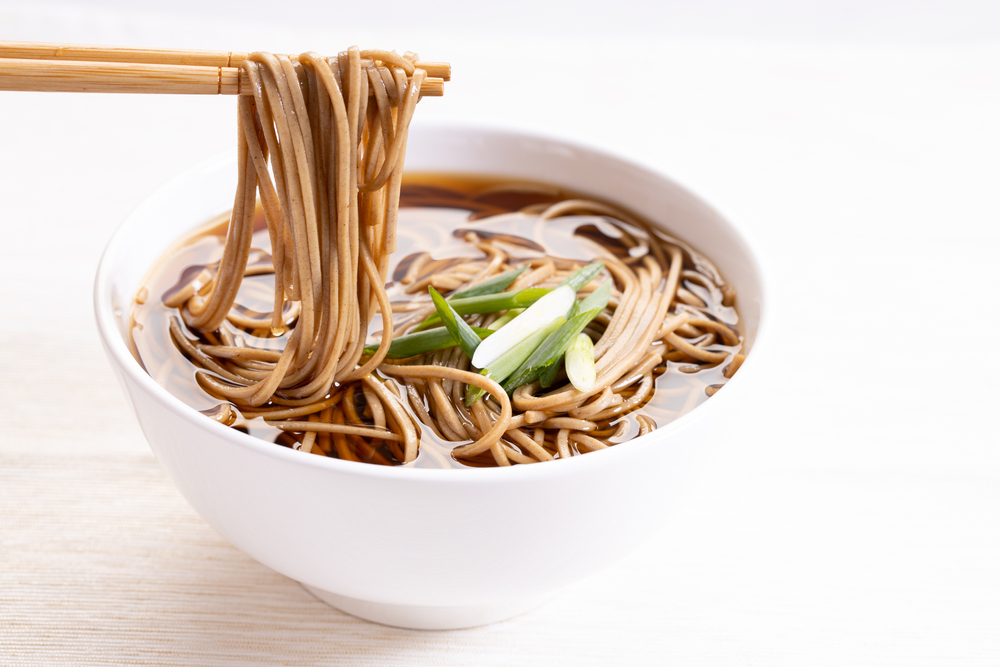
You’re looking for it to be in a rectangle shape when you’re finished, with a final thickness of only 1/16 to 1/8th of an inch thick. The thinner you can get it without the dough tearing the better. The width of your dough rectangle is going to be the final length of your soba noodles.
Step Six
Folding the dough is a complicated process, but it will make it much easier to slice your dough into noodles. After each fold, sprinkle starch onto the dough to keep it from sticking.
Fold the dough in half as if you’re closing a book. Then, fold it in half again from the top down. Add more starch and fold it from the top down again. Eventually, you’ll be left with a neat rectangle of folded dough.
Step Seven
Slice the soba using a ruler or pastry scraper as a guide to keep your cuts even. You’re going to want to cut your noodles as thin as possible. Ideally, keep them as thin as you rolled them, between 1/16th and 1/8th of an inch.
Step Eight
Finally, you’re ready to cook your soba noodles. You can cook these for a much shorter time than you’d cook pre-packaged noodles; about 60 seconds will have them soft and ready to eat.
You can freeze your leftover noodles fo up to 3 months. Thaw them in the fridge before you cook them.
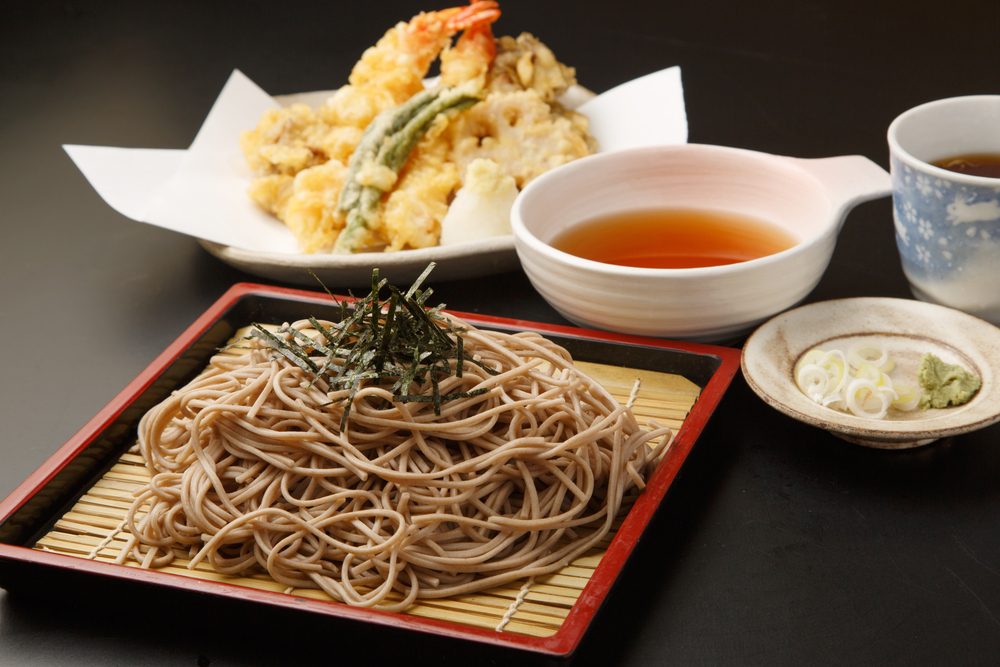
Making your own soba noodles when you’ve run out of packaged noodles is quick and relatively simple if you have the ingredients. It only takes as long as you’ll need to knead out the dough, and you’ve got replacement noodles ready to cook up and serve.
Conclusion
Soba noodles are tasty and versatile. They are excellent dipped cold into sauces, or served up hot in a steamy broth. The nutty, earthen flavor is sure to please, and they’re an excellent gluten-free option.
Somen noodles, udon, ramen, and yakisoba noodles can act as a substitute if you’ve run out of soba. You can also try whole wheat spaghetti or vermicelli. If you have the ingredients on standby, making your own buckwheat soba noodles is rewarding, fast, and yields a delicious result.



